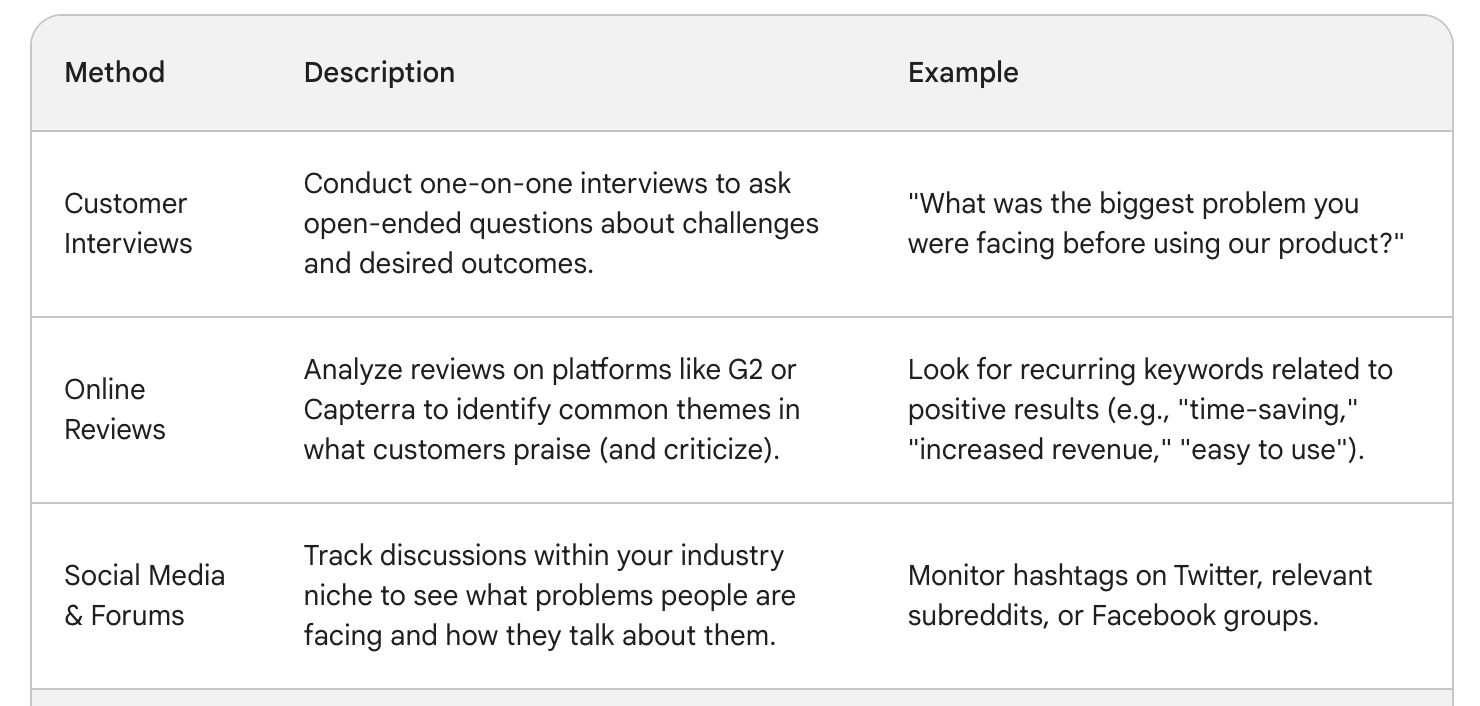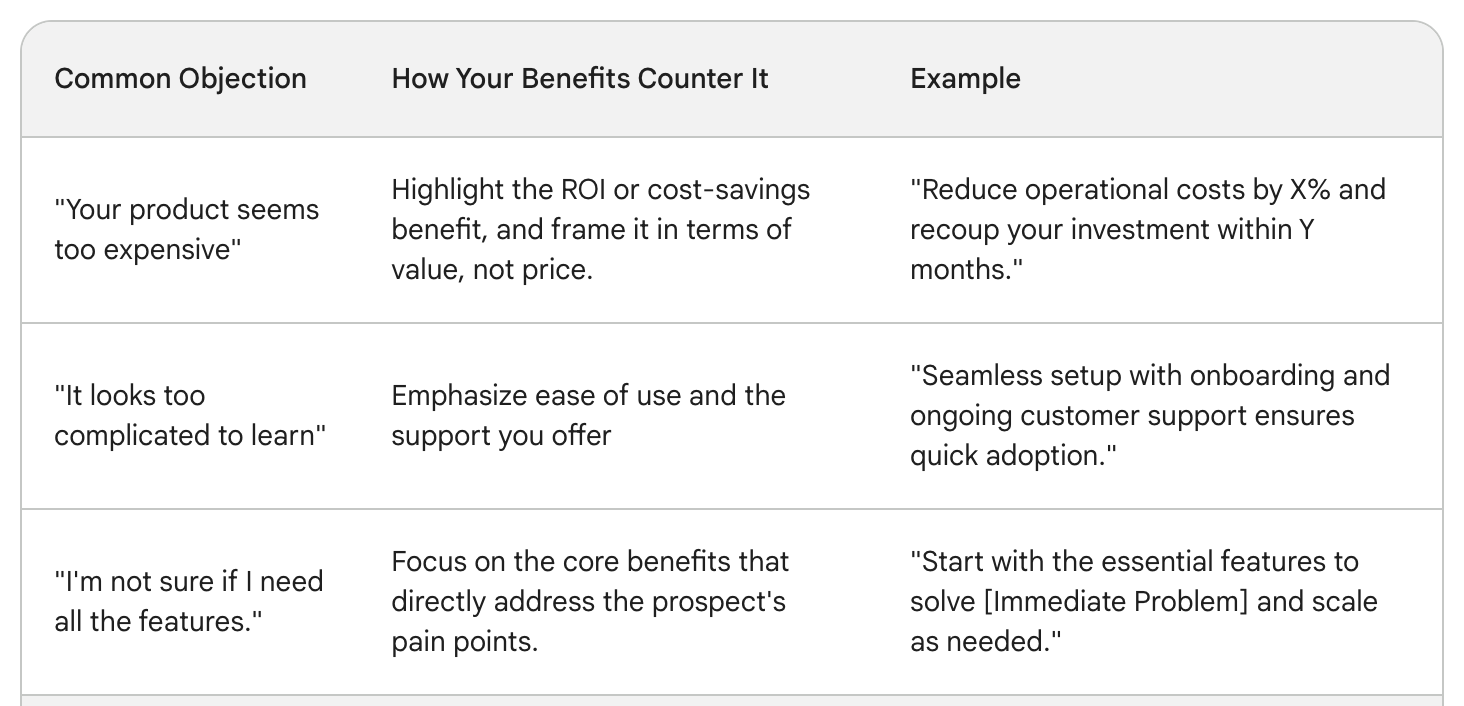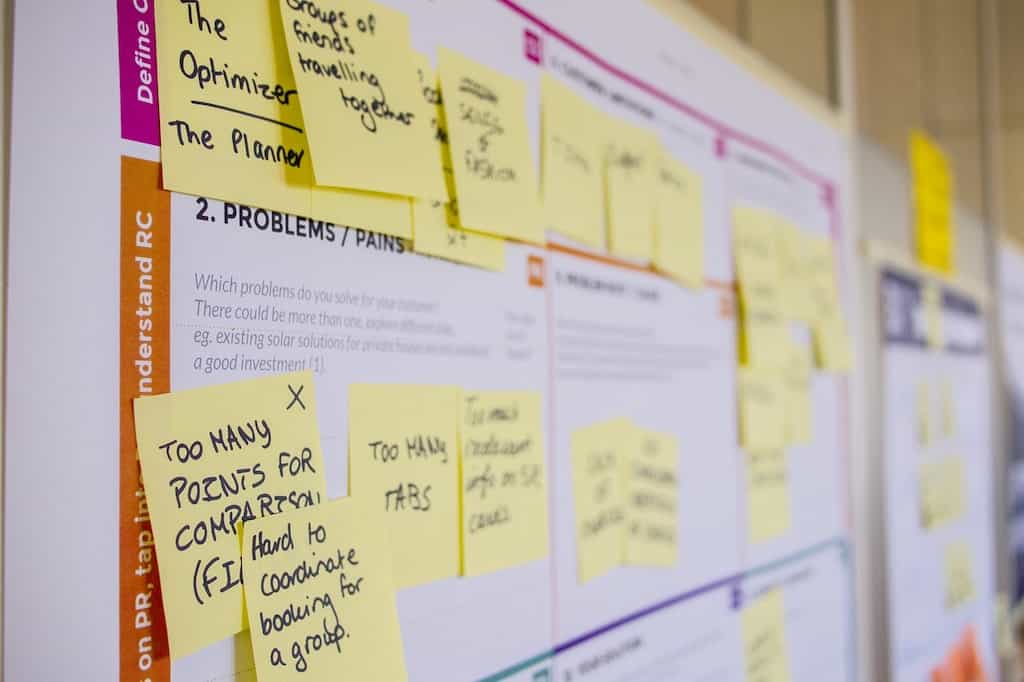Ever scrolled through a website, trying to figure out if a product is actually right for you, only to be bombarded with endless feature lists? Me too. It's frustrating! Sure, the tech specs are nice, but what you really want to know is: how will this make my life/work easier?
Most marketers can explain the difference between a feature and a benefit. Features are the “what,” and benefits are the “why.” It seems obvious enough. But here's where I see most companies and marketers fumble—and miss enormous growth opportunities: they fail to fully leverage both.
When it comes to messaging that turns prospects into raving customers, focusing solely on features is a recipe for commoditization. Your solution is just one in a sea of many. On the other hand, if you focus only on benefits, you come off sounding salesy and inauthentic.

The key is finding the right mix of the two, and nailing the way you communicate them.
As the founder of a SaaS marketing agency, I've seen the impact this gets firsthand. This approach is a huge part of how I help clients not only stand out from their competitors but dominate their markets. In this post, I'll break down some of the more nuanced, lesser-known aspects of features vs. benefits and share how you can apply them immediately.

Why Focusing on Features is a Dead-End
Let's be honest for a moment: features are boring. They're a list of specifications. I get that as product people, we can geek out on the details and find them absolutely fascinating. We've been deep in the trenches building this solution—it only makes sense. But put yourself in the buyer's shoes. They have endless solutions they can buy. They don't care about your cool tech nearly as much as they care about what it can do for them.
Think of it like buying a car. Do you drool over the specs of the engine, or do you care more about getting from point A to point B smoothly, with a sweet sound system for the ride? It's the latter, even if the former is still important.
Let your competitors waste all their time talking about themselves. Instead, get laser-focused on what you can do for your customers.

Identifying the Right Benefits: Think Outcomes, Not Output

It's tempting to fall into the trap of listing your product's outputs as benefits. For example, if you made a sales automation tool, you might think these are your benefits:
- Send 1000 automated emails per day
- Get 30% higher open rates
- Generate 50% more leads
But, while there's some value here, it's too surface level. These are the outputs your product creates. The real benefits—the ones that resonate—are tied to your customer's desired outcomes.
Let's reframe those “benefits” keeping outcomes in mind:
- Benefit 1: Spend less time on repetitive tasks, freeing you up to close deals.
- Benefit 2: Capture prospects who would've otherwise slipped through the cracks.
- Benefit 3: Fill your pipeline consistently so you hit your quota every month.
See the difference? These resonate emotionally. The buyer can clearly picture the outcome they want. This will make them significantly more likely to pay attention to your messaging, and ultimately, convert.

Speaking Your Customer's Language
There's one massive mistake I see with the way companies try to communicate their benefits: they use their own language, not the language of their customers. To truly resonate, benefits need to be framed in terms of what matters to your customer.

Here's a quick framework for uncovering exactly what language to use:
- Who is your perfect customer? Describe them in detail (role, challenges, fears, aspirations). Be specific.
- What are their top 3 pain points? These are the things keeping them up at night.
- What are their top 3 goals? What are they dreaming of accomplishing?
- What words do they use to talk about these pains/goals? Mine reviews, forum posts, social media, and customer calls.
Let's take an example. Say you offer a marketing analytics tool, and your ideal customers are CMOs of fast-growing startups. Here's how your feature/benefit messaging might be misaligned, versus how it could be improved:
| Misaligned | Aligned |
|---|---|
| Feature: Robust data visualization and reporting tools | Benefit: Get laser-clear visibility into what's actually driving growth so you can confidently allocate your budget. |
| Feature: Easy-to-use, drag-and-drop interface | Benefit: Stop wasting time wrestling with spreadsheets and get the insights you need, right now. |
| Feature: Integrates seamlessly with your entire marketing tech stack | Benefit: Say goodbye to data silos and finally have a single source of truth for your entire team. |
Notice how the revised benefits speak directly to the CMO's lived experience? Using their language strengthens your messaging tenfold.

Power of Specificity
Vague, generic claims make me cringe. For example, in the SaaS world, you always hear about “saving time” or “increasing revenue.” But how much time? By exactly how much will revenue increase? If you can't back up your benefits with specifics, your prospect won't take your claims seriously.
Here's an example that's a bit too bland:
- Benefit: Our project management tool helps teams get more done.
Let's inject some life into this:
- Benefit: Our project management tool helps teams complete projects 25% faster, reducing costs and freeing up bandwidth for strategic work.
Which one gives you a clearer idea of the potential impact?
Whenever you can, use the following to supercharge your benefits:
- Numbers: 25% faster, 30% decrease, etc.
- Timeframes: “within [x] days,” “in [x] weeks,” etc.
- Customer success stories: “Company X increased their lead conversion rate by 15% within their first month of using our solution.”
Weaving Features and Benefits Together (The Right Way)

Here's where things get juicy: the real art is skillfully combining features and benefits to create powerful messaging. I'm not talking about those cookie-cutter, one-liner feature/benefit statements you often see. I'm talking about something richer and more persuasive.
Here's where storytelling comes into play. Let me illustrate with an example.
Let's say you have an SEO tool with a powerful keyword research feature. That's the “what.” But to weave this feature into your marketing in a meaningful way, take a step back. Here's how the story might go:
“Imagine you're struggling to get your content to rank. Competitors seem to outrank you for all the keywords that matter. You can't figure out what you're doing wrong. Well, if you don't understand the search landscape—the specific search terms and questions your customers are using—you're flying blind. Our keyword research feature gives you the x-ray vision to cut through the noise and uncover the exact terms your audience cares about. This lets you laser-target your content, driving massive organic traffic your way.”
In this story, we touch on pain points, goals, the features, and the benefits, all in a natural conversational way that draws the reader in.
The Competition: An Overlooked Goldmine
Smart marketers understand that their competitors are an absolute treasure trove of insights. While you should never copy your competitor's messaging, you can learn a tremendous amount by paying attention to how they position themselves.
Here's what to look for:
Are they heavily feature-focused? This means there's a massive opportunity for you to stand out by focusing on benefits.
Are they missing the mark with their benefits? Take notes on where they fall short. Are the benefits too generic? Not outcome-oriented? This tells you how to outperform them.
What are prospects saying about them? Analyze customer reviews on sites like G2 or TrustRadius. What problems did their solutions solve? Where did they leave the customer wanting more?
By using your competitors' successes and failures to your advantage, you can short-circuit your way to creating outstanding messaging of your own.
It's Time to Go Forth and Conquer!
By now, you fully understand the distinction between features and benefits, and, more importantly, how to leverage them masterfully. There's no limit to the impact this can have. When you get this right, you're not just outperforming your current competitors—you're creating a solution and a brand that becomes indispensable to your customers.
FAQ
1. I get the difference between features and benefits, but how do I know what the most important benefits are to my customers?
The best way to uncover this is by doing in-depth customer research. This involves:
- Interviewing existing customers: Ask open-ended questions about their challenges before using your product, what led them to seek a solution, and what results they've achieved.
- Analyzing online reviews: Look at sites like G2 and Capterra to see what users rave about and what they say is lacking.
- Monitoring social media and forums: See what types of problems people in your niche are discussing and the language they use.
2. My product has a lot of features. How do I choose which ones to highlight in my messaging?
Prioritize the features that tie directly to your customers' top pain points and goals. For example, if your ideal customer struggles with time management, highlight the features that automate tasks and improve efficiency. Also, consider which features are most unique to your product – these can be a key point of differentiation from your competitors.
3. Is there a rule of thumb for the ratio of features to benefits I should mention?
There's no hard and fast rule, but benefits should definitely be the main focus. Think of features as the supporting evidence for your benefit claims. A good approach is to introduce a key benefit, and then briefly mention one or two features that enable it.
4. My competitors seem to be doing well focusing on features. Why shouldn't I?
While your competitors might be getting some traction with this approach, they're likely leaving a lot of opportunity on the table. Feature-focused messaging can attract price-sensitive customers who are just looking for the cheapest solution. But by focusing on benefits, you attract the customers who truly see the value in what you offer and are willing to pay a premium for it.
5. How do I make my benefits sound believable, and not just like marketing fluff?
Specificity is your best friend here. Instead of vague claims like "boost your productivity," be clear about what that means. For example, "automate repetitive tasks and free up 10 hours of your work week." Another powerful way to add credibility is through customer success stories or testimonials that illustrate the real-world impact of your product.
6. Can you give me an example of turning a feature into a compelling benefit?
Absolutely! Let's say your product has a feature like "real-time data tracking." Here's how you could turn that into multiple benefits, depending on your customer:
- Benefit for a marketer: Make data-driven decisions in the moment, instead of waiting for reports.
- Benefit for a salesperson: Identify hot leads and close deals faster.
- Benefit for a customer support rep: Instantly access customer history to resolve issues quickly.
7. I still struggle with using my customers' language. Any tips?
Pay close attention to the words and phrases they use when describing their problems and goals. Mine customer reviews, testimonials, and even social media comments to get a feel for their world. Then, mirror that language back to them in your messaging. This creates a sense of familiarity and shows that you truly understand them.
8. Should I have different messaging for different customer segments?
Yes, absolutely! The more you can tailor your messaging to the specific needs and goals of each customer segment, the more it will resonate. For example, an enterprise customer might care about scalability and security, while a small business owner might be more focused on ease of use and affordability.
9. How often should I revisit and update my messaging?
It's a good idea to review your feature/benefit messaging at least annually. Your market, ideal customers, and competitors are constantly evolving. Re-evaluating your messaging ensures it stays aligned. You should also revisit it anytime you launch major new features.
10. Are there tools or resources that can help me with this?
Yes! Here are a few:
- Customer feedback tools: Try SurveyMonkey or Typeform to get direct insights.
- Competitor analysis tools: Check out SEMRush or Ahrefs to see what messaging is working for others in your space.
- Keyword research tools: Tools like Google Keyword Planner can help you understand the specific terms your customers are searching for.






